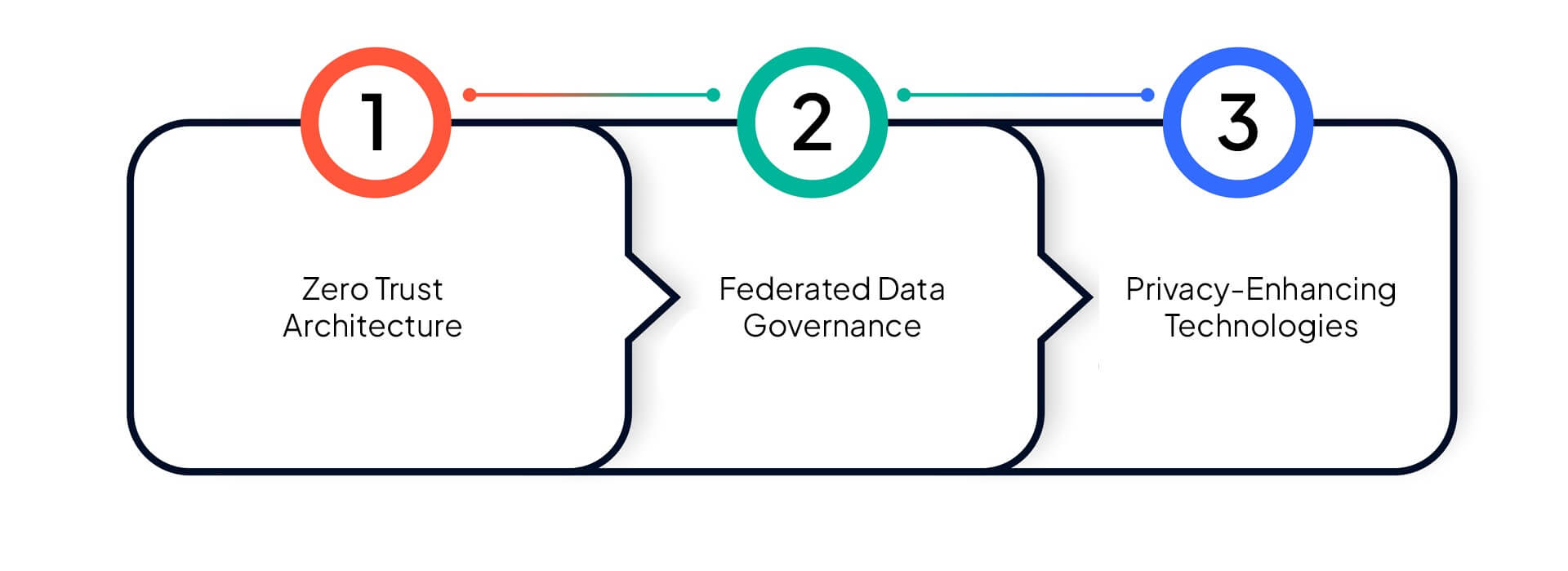When Apple announced that it would open a data center in China’s Guizhou province to comply with local regulations, the message was clear: in today’s digital world, data sovereignty has become a geopolitical bargaining chip. From India to Brazil, from the European Union to the U.S., governments are tightening their grip on data flows, pushing for more localization to assert control, enhance national security, and protect citizen privacy. But beneath the surface of this regulatory rush lies a critical question: Does localizing data within borders protect it?
At first glance, the logic is simple. If personal data doesn’t leave the country, it should be less vulnerable to foreign surveillance or misuse, right? That belief is fueling a global wave of legislation. India’s Digital Personal Data Protection (DPDP) Act allows for data localization under certain categories. The EU’s GDPR imposes strict rules on cross-border data flows. The United States, while traditionally resistant to localization, has begun enforcing tighter restrictions on data transfers to nations of concern. This direction aligns with a shared intuition: local equals safe.
But is that true? Is the mere act of storing data within a country’s borders enough to guarantee privacy? Increasingly, the answer appears to be no, and the consequences of this misconception could be far more damaging than we think.
The Localization Mirage: A False Sense of Control
Data localization, in practice, is often a reactive move—a means to demonstrate regulatory compliance or align with nationalistic agendas. It offers political optics and perceived control. Yet from a technical standpoint, localization alone rarely addresses the true vectors of modern privacy breaches.
Consider this: Data breaches are rarely about geography. They stem from insecure APIs, over-permissive access, insider threats, misconfigured cloud storage, and lack of encryption, not where the server physically resides. If a system is exposed to the public internet and lacks proper controls, it’s vulnerable—whether it sits in Frankfurt or Bengaluru.
In fact, according to IBM’s 2024 Cost of a Data Breach report, the average breach cost was highest in organizations with fragmented data environments, a scenario made worse by enforced localization without corresponding governance. Data that is localized but poorly managed creates an illusion of security, one that can blind enterprises to operational and compliance risks.
The issue is that localization tends to focus on where data is stored, rather than how it is secured, accessed, and governed.
The Fragmentation Fallout: Operational, Strategic, and Legal Risks
This misplaced emphasis is already having consequences. Enterprises complying with localization laws often end up duplicating infrastructure across countries. This not only drives up costs—Gartner estimates a 30-60% increase in IT spend in regions with strict localization mandates—but also leads to fragmented data lakes, poor observability, and inconsistent security practices.
Worse, localization can amplify legal and ethical risks. In jurisdictions with weak rule of law or aggressive state surveillance, storing data locally may make it more accessible to government overreach. China’s Cybersecurity Law, for example, allows authorities to demand access to data stored on domestic servers—something companies like Apple and Tesla have had to navigate under intense scrutiny.
So while regulators push localization to protect citizens, it may paradoxically expose them to internal threats. This is the unspoken irony: a border does not equal a barrier.
The Technical Gap: Localization ≠ Protection
Let’s unpack the technical reality. Most modern enterprises run hybrid environments: a mix of on-premises, cloud, and edge deployments. Localizing data in such contexts requires more than just relocating storage—it involves controlling data in motion, ensuring compliance in processing, and enforcing policies across multi-cloud networks.
A recent survey by IDC revealed that 80% of enterprise data is unstructured—emails, images, documents, logs—and most of it is undiscovered, unclassified, and uncatalogued. Without metadata enrichment, content-aware classification, and role-based access controls, storing such data locally achieves little in terms of protection or privacy readiness.
Then there’s the problem of interoperability. Cross-border AI initiatives, joint research efforts, or supply chain analytics often rely on global data flows. When localization blocks these exchanges, it hampers innovation and complicates everything from model training to collaborative compliance.
It’s like locking your valuables in a room, but leaving the door wide open.
Beyond Borders: Redefining Data Protection with Dynamic Control
To truly safeguard data in today’s fragmented regulatory and threat landscape, enterprises must move beyond static notions of geography. The future of privacy and compliance lies not in where data is stored, but in how it is controlled, secured, and governed across its lifecycle. This requires a shift from location-based protection models to a framework built on risk-aware, policy-driven governance and technical sovereignty.
At the heart of this transformation is the need to embed control directly at the data layer. It’s about implementing intelligent architectures that can adapt dynamically, governing who has access, under what conditions, and with what level of visibility, regardless of the physical or cloud environment.
This next-generation model rests on three interlocking pillars:

- Zero Trust Architecture: In a world where threats are increasingly internal, persistent, and credential-based, traditional perimeter defenses are obsolete. Zero trust assumes breach by default—requiring continuous verification of identity, strict access segmentation, encryption in use, and contextual policy enforcement.
- Federated Data Governance: Centralized control is no longer scalable or desirable. Federated governance distributes responsibility across data creators, owners, and custodians, allowing business units to set permissions, retention rules, and usage policies while maintaining a unified global framework. With capabilities like policy orchestration, automated tagging, audit trails, and AI-powered observability, enterprises gain both agility and accountability.
- Privacy-Enhancing Technologies (PETs): These advanced techniques redefine how sensitive data can be protected and analyzed. Differential privacy masks individual identities during analytics. Homomorphic encryption allows data to be processed without ever being decrypted. Secure enclaves and federated learning bring computation to the data, minimizing transfer risks and exposure. Together, PETs support privacy by design, not just by regulation.
By converging these capabilities, organizations can build what might be called a sovereign data operating model—one that enforces security and compliance as fluid, intelligent processes rather than fixed geographic constraints. It’s an approach that respects localization laws when necessary but goes further—delivering privacy that scales, adapts, and evolves with enterprise needs and global expectations.
Why It Works: Benefits Beyond Borders
This approach delivers privacy as a function of design, not location. The benefits are compelling.
Security improves dramatically. When data is encrypted at rest and in transit, stored with least-privilege access, and automatically monitored, breaches become far harder to execute—and far easier to detect.
Compliance becomes scalable. With unified policies enforced across jurisdictions, organizations can adapt to new regulations—like India’s DPDP Act or evolving interpretations of GDPR—without rebuilding infrastructure from scratch.
Operational agility increases. Enterprises can deploy AI models, conduct audits, or fulfill subject access requests without needing to navigate physical server constraints. In a digital economy where speed matters, this flexibility is gold.
Finally, trust gets a boost. Consumers are increasingly privacy-conscious—87% of global users consider data privacy a human right, according to Cisco’s 2024 Consumer Privacy Survey. Brands that demonstrate control, transparency, and accountability will have a competitive edge.
Privacy Isn’t a Place—It’s a Practice
Data localization is not inherently bad. In some contexts—national defense, critical infrastructure, citizen databases—it makes sense. But to treat localization as a silver bullet is to misunderstand the nature of digital risk. In an interconnected world, data does not respect borders, and neither do threats.
What truly protects data is governance, visibility, and security, by design. That means focusing less on where data sits and more on how it flows, who can access it, and under what conditions.
Enterprises must evolve from seeing compliance as a checkbox to viewing it as a strategic enabler. Governments, too, must modernize policy, shifting from data nationalism to interoperable frameworks rooted in technical controls and shared trust.
This is where solutions like Zubin, an AI-powered self-service data management software, come into play. Built to address the governance gaps traditional localization leaves behind, Zubin empowers enterprises with fine-grained visibility, automated policy enforcement, and risk-based controls across unstructured data environments, no matter the storage location. It supports federated ownership, real-time classification, and role-based access, ensuring that privacy and security aren’t isolated features, but core to the data architecture itself.
Rather than forcing a one-size-fits-all storage mandate, Zubin enables a flexible, sovereignty-respecting framework where organizations can comply with local laws while maintaining global intelligence. It bridges the gap between geographic requirements and technical resilience, offering the kind of control, traceability, and compliance that data localization alone simply cannot guarantee.
The future of privacy won’t be built on firewalls or fences. It will be built on intelligent systems, federated governance, and ethical architecture.
Because data privacy isn’t about borders. It’s about boundaries—the ones we draw with policies, with encryption, and with principle. To know more about Zubin and try it firsthand, visit – https://www.datadynamicsinc.com/request-a-demo/






